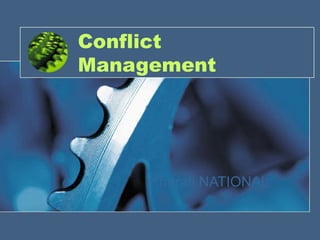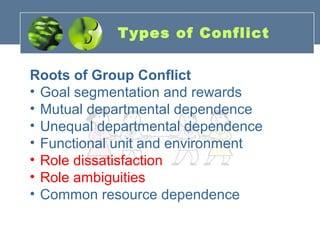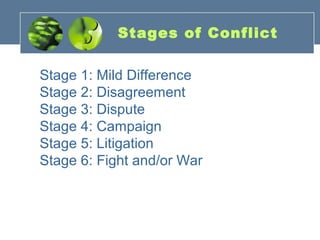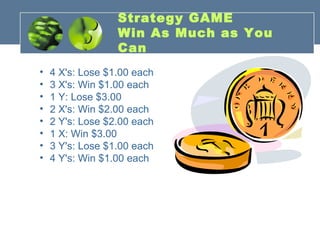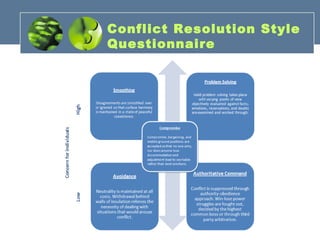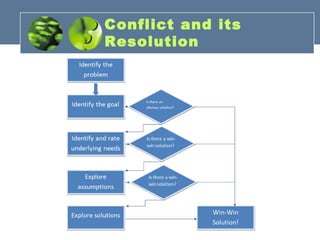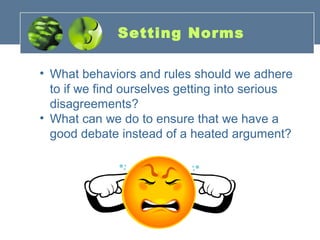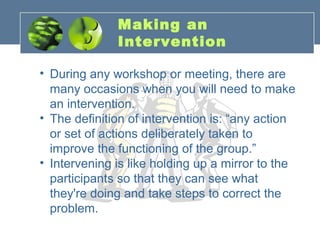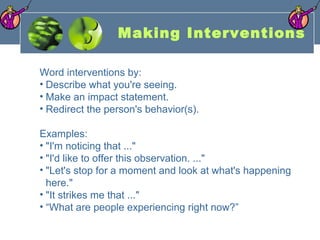This document provides information on conflict management and resolution. It discusses:
- The objectives of understanding conflict, improving communication skills, and enhancing productivity through effective conflict management.
- Definitions of conflict and assumptions people have about it.
- Types of conflict including inner, interpersonal, and group conflict with various roots.
- Strategies for dealing with conflict including lose-lose, win-lose, and win-win approaches.
- Tools and techniques for resolving conflict such as active listening, paraphrasing, asking powerful questions, setting norms, and making interventions.
